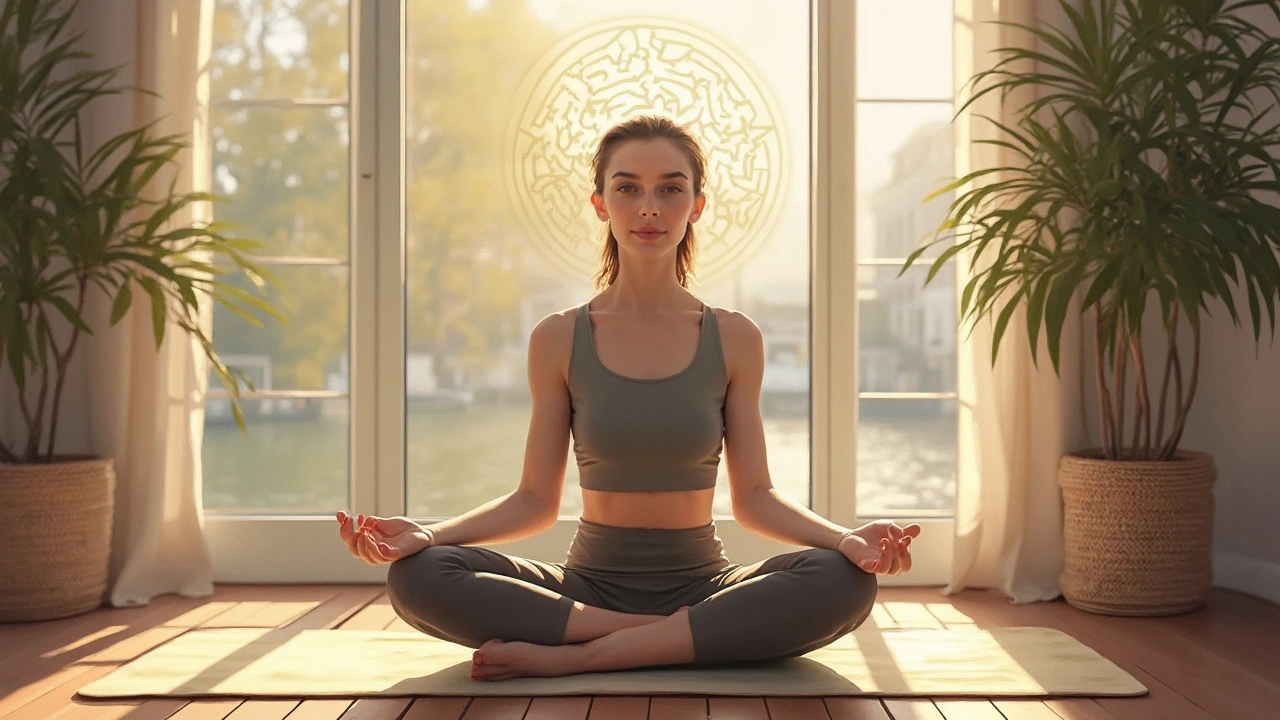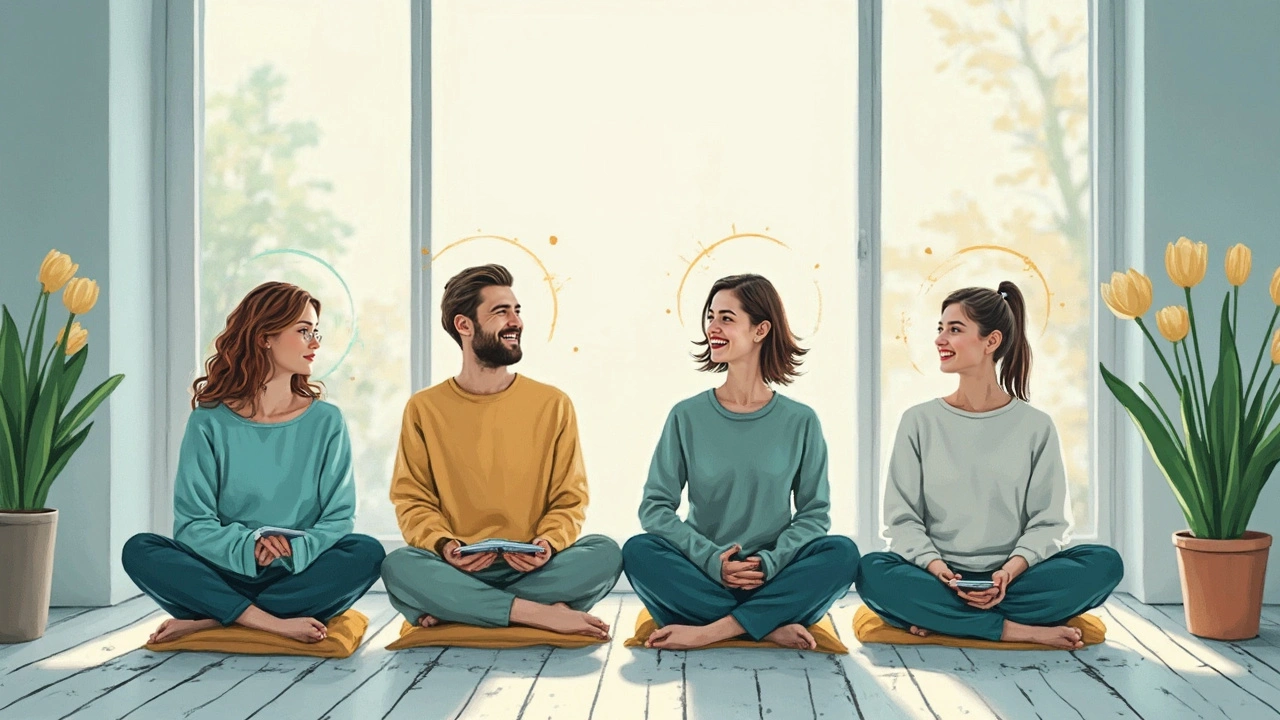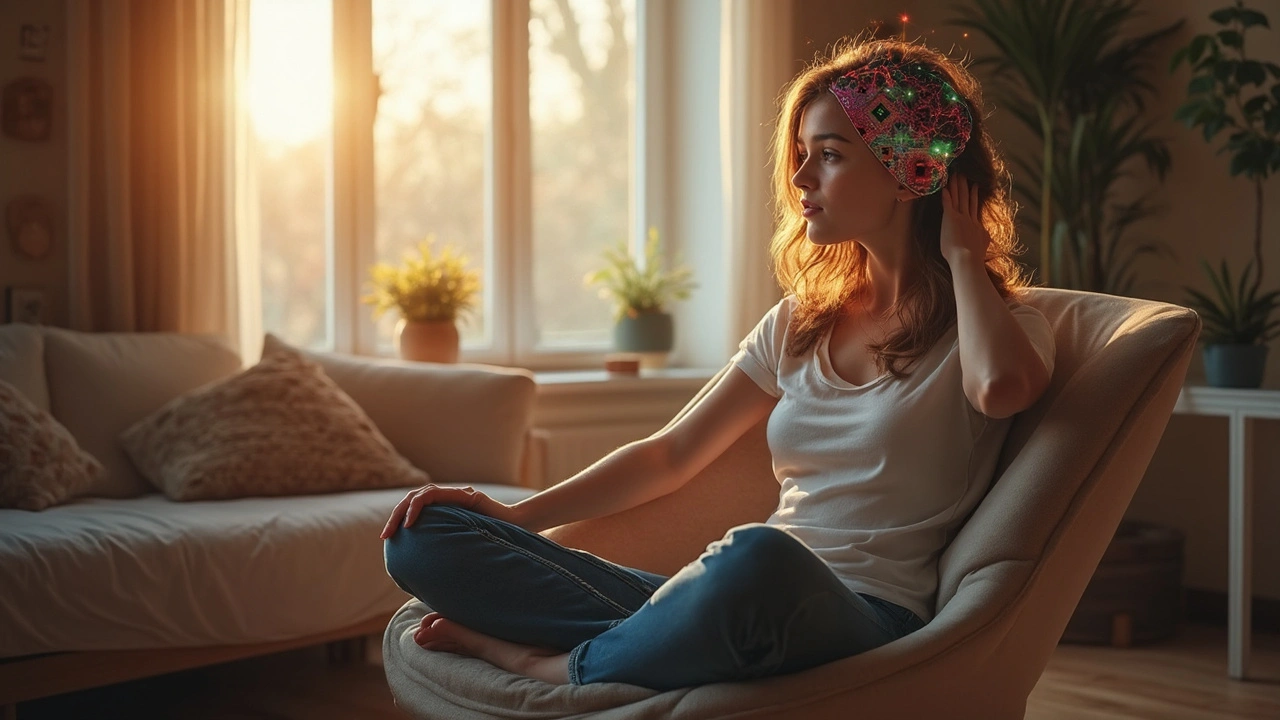Head Massage Benefits: How Head Massage Can Enhance Your Meditation Practice

Ever try to meditate but your mind just won’t shut up? Or maybe you sit down, get comfy, and those tiny, nagging tensions around your head won’t leave you alone. That’s where head massage comes in—it’s honestly a game changer for squeezing more peace and focus out of every meditation session.
Think about it: A few minutes of soothing touch can melt away the cranky headaches, the shoulder tightness, or that fried-brain feeling after a rough day. When you’re relaxed, it’s way easier to slip into a meditative state. And the best part? You don’t need fancy oils or a posh spa (unless you want to go all out!). You can start with simple moves at home or get help from a pro if you’re feeling extra.
Head massage is more than just a treat—it’s a tool. There’s real science behind why it helps you focus better, stress less, and even sleep deeper after meditating. Ready to make your meditation practice feel less like a struggle and more like a mini-vacation for your brain? Let’s explore how you can get started, what styles to consider, and how it can boost your routine even if you’re totally new to both meditation and massage.
- Key Benefits of Head Massage for Meditation
- How Head Massage Fits Into Your Meditation Routine
- Types of Head Massage You Can Try
- Practical Safety Tips and Session Guide
Key Benefits of Head Massage for Meditation
If you ever feel restless or foggy when you sit down to meditate, you’re not alone. Here’s what makes a head massage a powerful sidekick for your mindfulness routine:
- Eases Physical Tension: Tight muscles around your scalp, temples, and neck can actually distract your brain when you try to focus. A head massage melts away that tension, making it way easier to feel comfortable and sit still.
- Boosts Brain Chemicals: Research shows head massage can ramp up your levels of serotonin and dopamine—two of the most important chemicals for feeling calm and positive during meditation.
- Reduces Stress: Got high cortisol? That’s the stress hormone, and head massage can lower it fast. Less stress helps you drop into your meditation groove much quicker.
- Improves Focus: Ever find your mind wandering a thousand miles away? When your head is relaxed, your focus sharpens, making it easier to pay attention to breath, mantra, or body scan exercises.
- Better Sleep: Poor sleep and meditation don’t mix. Head massage right before a session, or before bed, helps chill out your nervous system and can even improve your sleep quality.
Here’s a quick look at what some studies suggest happens when you combine massage and meditation:
| Benefit | What Studies Found |
|---|---|
| Reduced Stress | Head massage lowers cortisol by up to 31% after just 15 minutes.* |
| Improved Mood | Levels of serotonin and dopamine can rise up to 28% post-massage.* |
| Increased Focus | People report better concentration and less mind-wandering during mindfulness practice after a head massage. |
*Data pulled from a 2019 study published in the International Journal of Neuroscience. It tracked stress hormone changes and mood scores in folks who received 15-minute head massages twice a week for a month.
So, adding a head massage before you meditate isn’t just about feeling good. It actively preps your body and brain to get more out of each session. If you’ve hit a plateau with your practice, or you’re just tired of feeling twitchy on the mat, a few minutes of scalp TLC might be the missing piece.
How Head Massage Fits Into Your Meditation Routine
Trying to meditate when you’re feeling tense or distracted can feel almost impossible. That’s why a head massage right before—or even during—your meditation works like hitting the reset button for your brain and body. Here’s why this combo just makes sense: when you relieve tension in your scalp, neck, and temples, your brain gets the signal that it’s time to chill. That means less fidgeting, fewer racing thoughts, and a bigger window to actually focus on your breath or mantra.
Science backs this up. A study from the International Journal of Neuroscience found that a 15-minute head massage dropped cortisol levels (the stress hormone) by as much as 30%. Lower stress hormones mean your body stops firing those annoying stress signals, making meditation actually meditative—not just sitting there feeling antsy. And get this: another report showed folks who paired head massage with relaxation techniques had more vivid mental clarity and could sit longer without feeling restless.
If you’re wondering where to add head massage into your routine, here are some easy ways to fit it in:
- Pre-meditation wind-down: Try a 5-minute scalp massage before sitting down—use your fingers in small, slow circles around your temples, sides, and crown. This gets the blood flowing and eases forehead tightness.
- During meditation: Try gentle pressure at the base of your skull or even tracing slow circles at your hairline if you start to feel fidgety—just keep your eyes closed and breathe.
- Guided routines: Some YouTube channels and meditation apps actually include head self-massage in their relaxation scripts. Perfect for beginners who want a step-by-step.
Lots of people ask if they need anything special. Honestly, you don’t. No fancy tools. No oils needed (unless you want that extra spa vibe). Just clean hands and maybe a timer so you don’t lose track.
| Routine | Time Needed | Common Results |
|---|---|---|
| Head Massage Before Meditation | 5-10 minutes | Relaxed muscles, easier focus, less tension headache |
| Head Massage During Meditation | 2-3 minutes | Stops restlessness, helps manage distractions |
| Guided Audio Sessions | 10-20 minutes | Full-body calm, better focus, improved mood |
If you’re using the head massage method to help your meditation, try tracking how you feel before and after for a week. Most folks I know (myself included) noticed way less jaw clenching and way more actual peace—not just “sitting silently” peace but the kind that sticks with you all day.

Types of Head Massage You Can Try
There’s more than one way to enjoy a head massage. Each style offers a little something different, so you can pick what fits you best—whether you want to chill out, boost focus, or just loosen up tight scalp muscles. Let’s break down the main approaches you’ll come across, so you know what to look for.
- Indian Head Massage (Champissage): This technique comes from Ayurveda and targets the scalp, temples, neck, and shoulders. It uses steady, rhythmic pressure to melt away tension. You might sit in a regular chair, fully clothed, so it’s easy to fit in before or after meditation. It’s famous for helping with stress, headaches, and improving blood flow to the scalp.
- Shiatsu Head Massage: Originating in Japan, Shiatsu uses finger and palm pressure along energy lines (they call them meridians). It’s good for easing fatigue and bringing a balanced, grounded feeling. With regular sessions, a lot of folks say their focus during meditation improves noticeably.
- Scalp Massage With Oils: Want to go a little deeper? Oils like coconut, almond, or jojoba are gently worked into the scalp using circular motions. Besides boosting scalp health, it adds a soothing scent for a mini spa vibe right at home. Just watch out for getting oil on your pillow—keep a towel handy!
- Self-Massage: Don’t have a partner or professional handy? No problem. You can use your fingertips to rub, knead, or tap your own scalp and temples. Some people use simple massage tools or electric scalp massagers you’ll find online. Even a few minutes before meditating can work wonders.
Turns out, head massage isn’t one-size-fits-all. If you’re looking to boost mindfulness, the Indian style is gentle but deep. For energy and whole-body relaxation, give Shiatsu a shot. If you’re after calm and nourished hair, try those essential oils. No matter which route you take, getting your head muscles to chill out can absolutely transform the way your meditation feels.
Practical Safety Tips and Session Guide
Before you dive into a head massage, a little prep and awareness can make the difference between a good experience and an uncomfortable one. Let’s talk specifics so you can enjoy every second and avoid problems.
First off: if you have scalp conditions like eczema, psoriasis, or open sores, skip massage until things clear up or check with your doctor. The same goes for folks with recent head injuries, concussions, or nerve issues—don’t risk it. And if you’re seeing a professional for the first time and take blood thinners or have a serious medical condition, just mention it—they’ve heard it all before.
- Head massage should never hurt. If you feel pain or dizziness, stop right away and communicate clearly—don’t tough it out.
- If you’re using oils, do a quick skin patch test. Even “gentle” oils can cause a rash for some.
- Watch out for jewelry, hairpins, and even clip-in extensions—they all get in the way and can pull painfully during a massage.
- Tell your massage pro about any headaches, tension spots, or recent treatments so they can avoid tender areas.
Want to try a session at home? Here’s a super practical guide anyone can follow, solo or with a partner:
- Wash your hands, and if you’re using oil, towel-protect your clothes and start with just a small amount.
- Sit comfortably, either on the floor or a sturdy chair. A quiet spot works best but don’t stress if it’s not perfect.
- Using your fingertips, make small circles from your hairline to the crown, then down to the base of your skull. Don’t rush—slow, consistent pressure works wonders.
- If you find a knot or sore spot, rest there for a few seconds and let the tension settle.
- Finish by gently tugging your hair in small sections and pressing your palms against your temples and forehead. This boosts circulation and feels amazing.
- Check how you feel. If you feel pain, tingling, or anything weird, stop and reassess.
If you’re booking with a pro, ask ahead about pricing, session length, and if they specialize in anything like Ayurvedic or Thai techniques. A legit therapist should listen to your needs and create a calm, safe environment—never feel awkward about asking questions or setting boundaries.
Hydrate well after your massage. Sometimes you might feel sleepy or groggy, but that’s totally normal—take it slow, and let your body reset.


